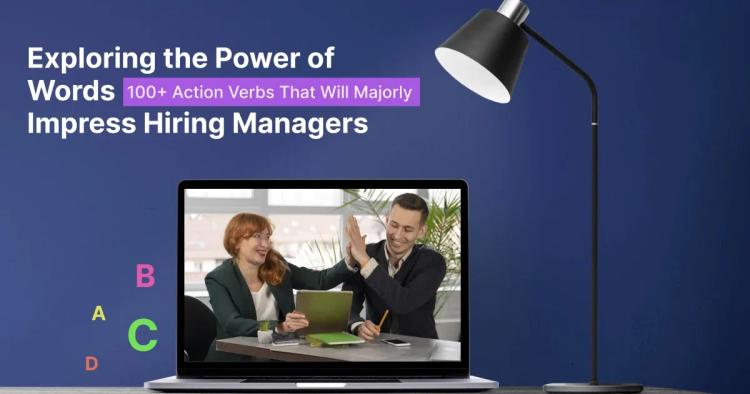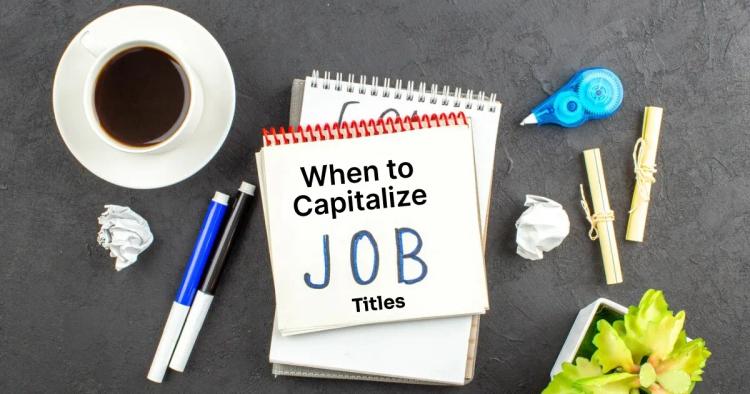Embarking on a new project is like setting sail into uncharted waters. The project proposal serves as your navigational chart, your compass, and your anchor – all rolled into one. It's not just a formality but the cornerstone of project success.
Understanding the essence of project proposals goes beyond the technicalities; it's about breathing life into your vision and sharing it with the world.
Defining the Purpose and Importance
Picture this: you're embarking on a road trip without a destination. Sounds chaotic, right? A project without a well-defined purpose is akin to a ship without a captain. Defining the purpose is not a mere checkbox on your to-do list; it's the North Star guiding every decision and action throughout your project's lifecycle.
The importance of a clearly defined purpose extends beyond the project team; it resonates with stakeholders, funders, and anyone whose support you seek. It's the rallying cry that transforms a mere idea into a compelling narrative, capturing hearts and minds alike.
Understanding the Target Audience
Imagine crafting a love letter without knowing who it's addressed to – the impact would be lost. Similarly, a project proposal without a keen understanding of the target audience is like shouting into the void. Understanding your audience is not just about demographics; it's about tapping into the beating heart of what drives them.
A successful project proposal is a conversation, not a monologue. Tailoring your message to resonate with the concerns, interests, and expectations of your audience is the secret sauce for securing their buy-in. This section will delve into the art of deciphering your audience's language, ensuring that your proposal not only reaches them but leaves an indelible mark.
Key Components of a Project Proposal
Creating a project proposal is akin to architecting a masterpiece. It's not just about putting words on paper; it's about constructing a framework that will support your project's ambitions. Each component plays a distinct role, contributing to the overall strength and coherence of your proposal.
Executive Summary
Think of the executive summary as the project's elevator pitch. In a world where attention spans are fleeting, this concise section serves as the gateway to your proposal. It encapsulates the essence of your project, providing a quick overview that entices the reader to delve deeper.
Crafting an effective executive summary requires the art of distillation – condensing the complexity of your project into a few impactful sentences without losing its essence.
Project Description
Consider the project description as the narrative core of your proposal. Here, you unfold the story of your project, from its inception to its current state. It's not merely a recounting of events but a strategic unveiling, strategically revealing the significance and potential of your project.
Like a skilled storyteller, you'll paint a vivid picture, allowing the reader to step into the world of your project and understand its context, challenges, and aspirations.
Objectives and Goals
Every journey needs a destination. Objectives and goals are the milestones that mark your project's progress. Defining them with precision is more than just setting benchmarks; it's about creating a roadmap that guides your project towards success.
This will delve into the nuances of goal setting, ensuring that your objectives are not just targets but strategic pillars supporting your project's overarching mission.
Methodology and Approach
The methodology and approach section is the engine room of your proposal. Here, you outline the step-by-step process that transforms your project from concept to reality. It's the "how" that complements the "what."
Crafting a robust methodology involves meticulous planning, demonstrating to your audience that your project is not just a dream but a well-thought-out strategy with a clear path forward.
Identifying Stakeholders and Audience
In the intricate dance of project management, stakeholders are the partners, critics, and supporters. Identifying them and understanding their roles is fundamental to the success of your project. It's akin to hosting a grand event; knowing your guests ensures you can tailor the experience to their preferences.
Stakeholder Analysis
Imagine orchestrating a symphony without knowing the instruments or the musicians. Stakeholder analysis is the conductor's baton, guiding you in understanding the key players in your project. From supporters to potential detractors, each stakeholder has a role that influences the project's trajectory.
Tailoring the Proposal to Your Audience
Crafting a project proposal is not a one-size-fits-all endeavor. Different stakeholders have different perspectives, interests, and levels of familiarity with your project. Tailoring your proposal to resonate with each audience segment is an art that goes beyond words.
It involves a nuanced understanding of their concerns and aspirations, allowing you to speak directly to their hearts and minds.
Structuring Your Project Proposal
The architecture of your proposal is the blueprint for its success. In this section, we delve into the elements that shape the structure of your proposal, ensuring it stands tall and sturdy.
Introduction
The introduction is the grand entrance to your proposal, setting the stage for what lies ahead. It's not just a formality; it's an opportunity to captivate your readers and make a memorable first impression. Think of it as the opening act of a play – intriguing, compelling, and setting the tone for the narrative that unfolds.
Crafting a powerful introduction involves a delicate balance of capturing attention and providing a roadmap for what's to come. Body
The body of your proposal is the narrative arc – the meat of your story. Here, you dive into the details, presenting your ideas, strategies, and evidence with clarity and coherence. It's more than a sequence of paragraphs; it's a carefully choreographed dance of ideas, each building upon the other.
Conclusion and Call to Action
Every story needs a satisfying conclusion. The conclusion of your proposal is not just a summary; it's the closing act that leaves a lasting impression. It's the moment when you reiterate the significance of your project, drive home your key points, and issue a compelling call to action.
Crafting a conclusion involves a delicate blend of summarizing without repetition and inspiring action without coercion.
Crafting a Compelling Project Title
The project title is the first glimpse your audience gets of your proposal, akin to the cover of a captivating book. It's not merely a string of words; it's a carefully chosen identifier that encapsulates the essence of your project. Crafting a compelling title involves more than just creativity; it's about capturing the spirit of your project in a few words.
Elements of an Effective Title
An effective title is like a well-crafted headline – it grabs attention, sparks curiosity, and provides a sneak peek into what's to come. This section dissects the elements that make a title click, from clarity and conciseness to the strategic use of keywords.
Understanding these elements empowers you to create a title that acts as a magnet, drawing your audience into the heart of your proposal.
Examples of Strong Project Titles
Sometimes, seeing is believing. This section presents real-world examples of project titles that have left a lasting impact. By analyzing successful titles, you gain insights into the art of crafting a memorable and effective project title.
It's a journey through the landscape of creativity and communication, inspiring to find the perfect title for your unique project.
Utilizing Visual Elements in Your Proposal
In a world saturated with information, visuals are the beacons that guide your audience through the complexity of your proposal. This section explores the strategic use of visual elements, transforming your proposal from a sea of text into an engaging and digestible experience.
Incorporating Graphics and Charts
A picture paints a thousand words, and in a project proposal, a well-chosen graphic or chart can convey complex information at a glance.
From flowcharts illustrating your methodology to graphs showcasing key data points, this section guides you on incorporating visuals that enhance understanding and add a dynamic layer to your proposal.
Ensuring Visual Consistency
Consistency is the glue that holds your visual elements together. Whether you're using a color scheme, fonts, or formatting, maintaining visual consistency contributes to the overall professionalism of your proposal.
Ensure that your visuals not only enhance but also harmonize with the written content, creating a cohesive and visually appealing document.
Timeline and Milestones
Projects unfold over time, and a well-crafted timeline with achievable milestones is the compass that guides your journey. In this section, we'll explore the intricacies of creating a realistic project timeline and setting milestones that propel your project forward.
Creating a Realistic Project Timeline
Setting deadlines is an art that requires a blend of optimism and pragmatism. In this section, we'll guide you through the process of creating a realistic project timeline. From identifying critical milestones to allocating time for unforeseen challenges, a well-crafted timeline serves as a roadmap that keeps your project on course.
Setting Achievable Milestones
Milestones are not just markers of progress; they are the building blocks of success. This section delves into the art of setting achievable milestones. By breaking down your project into manageable segments, you not only provide a clear path forward for your team but also create opportunities for celebration and motivation as each milestone is achieved.
Resource Allocation and Budgeting
Projects require resources and managing them effectively is a hallmark of successful project proposals. In this section, let us explore the intricacies of identifying necessary resources and implementing budgeting best practices.
Identifying Necessary Resources
Resources are the lifeblood of a project and identifying them requires a meticulous approach. From human resources with specific skill sets to materials and technology, understanding what your project needs is crucial.
Budgeting Best Practices
Money matters and budgeting is the financial backbone of your project. Explore the best practices for budgeting, from creating a comprehensive budget that covers all aspects of your project to ensuring flexibility for unexpected expenses.
By mastering the art of budgeting, you not only demonstrate financial acumen but also set the stage for transparent and responsible project management.
Risk Assessment and Mitigation
Projects, like adventures, are not without risks. Identifying potential risks and developing strategies to mitigate them is akin to fortifying your project against unexpected storms.
Identifying Potential Risks
Imagine sailing into uncharted waters without a map. That's the scenario when you embark on a project without identifying potential risks. By anticipating challenges before they arise, you empower your project team to navigate through turbulent waters with foresight and resilience.
Developing Mitigation Strategies
Risk mitigation is your project's insurance policy. In this section, we'll delve into the strategies for developing mitigation plans that not only address potential risks but also enhance your project's overall resilience.
Understanding how to mitigate risks is a crucial skill for project managers seeking smooth and successful project execution.
Writing Style and Tone in Proposals
The language you use in your project proposal is more than just words on a page; it's the personality of your project. Maintaining a professional tone and ensuring clarity and conciseness are the pillars of effective communication.
Professional Tone
A project proposal is a formal document, and its language should reflect professionalism. Avoid jargon that might alienate non-experts to striking the right balance between formality and approachability. By adopting a tone that exudes competence and respect, you enhance the credibility of your proposal.
Clarity and Conciseness
In a world inundated with information, clarity is king. This section delves into the importance of clarity and conciseness in your writing. From organizing your thoughts logically to using plain language, understand how to communicate your ideas with precision and impact.
Proofreading and Editing Your Proposal
Before your proposal sets sail into the hands of stakeholders, a final polish is essential. In this section, we'll underscore the importance of proofreading and introduce tools like grammar checkers for quality assurance.
Importance of Proofreading
Typos and grammatical errors can undermine the most well-crafted proposal. From catching simple typos to ensuring consistency in formatting, thorough proofreading is the last line of defense against oversight.
Using Grammar Checkers for Quality Assurance
In the digital age, tools can be your best allies. In this section, we'll introduce the role of grammar checkers in the proofreading process.
From basic spelling checks to more advanced grammar suggestions, leveraging these tools enhances the overall quality of your proposal.
Copychecker's Grammar Checker Tool: Overview
Copychecker is an advanced grammar-checking tool designed to enhance the quality and professionalism of your writing. By leveraging innovative technology, Copychecker goes beyond basic grammar correction, offering users a comprehensive solution for refining their project proposals.
Using Copychecker for Proposal Enhancement
Incorporating Copychecker into your writing process is a strategic move to streamline and elevate your work. Begin by using Copychecker during the initial drafting phase to catch common errors and refine your writing style.
As you move through revisions, keep Copychecker at your side, allowing it to act as a vigilant second set of eyes, offering valuable suggestions and ensuring a more polished and error-free final proposal.
Addressing Grammar and Style Issues
Copychecker excels at addressing various grammar and style issues that may elude the human eye. From correcting punctuation errors to suggesting improvements in sentence structure, Copychecker serves as a dynamic writing companion.
Specific examples include refining awkward phrasing, offering alternatives for overused words, and ensuring consistency in tense and tone. By actively applying Copychecker's recommendations, you enhance the professionalism and impact of your project proposal.
FAQs
How to write a project proposal?
Crafting a project proposal involves defining purpose, outlining objectives, detailing methodologies, and addressing key components with a structured, clear, and detailed approach.
What is a project proposal?
A project proposal is a formal document outlining project details, objectives, and strategies, seeking approval and support from stakeholders, funders, and team members.
What are the 4 types of project proposals?
The four main types are solicited (responding to requests), unsolicited (initiated by the proposer), continuation (seeking funding for existing projects), and renewal (requesting continued funding for successful projects).
What are the 4 elements of a project proposal?
Essential elements include an executive summary, project description, objectives and goals, and methodology and approach, providing a comprehensive view of the project's purpose and execution plan.
Conclusion
As you wrap up the journey of crafting your project proposal, remember that each word penned is a brushstroke on the canvas of innovation. This comprehensive guide, coupled with the power of tools like Copychecker, equips you with the artillery needed to create a compelling narrative.
Your project proposal is not merely a document; it's an invitation to join you on a journey of transformative impact. Happy writing, and may your words pave the way for a future defined by innovation, collaboration, and accomplishment!




